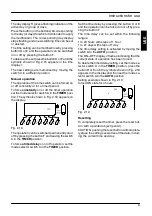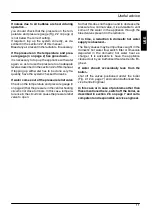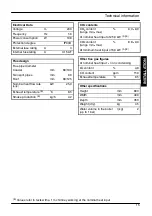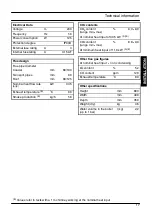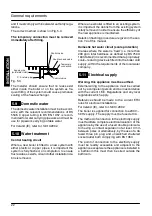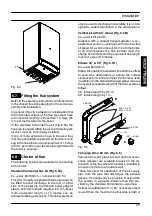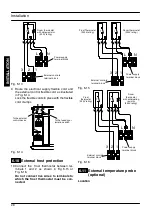
General requirements
rev. 17.09.93
21
---
the drainpipe should be adequately fixed to
prevent pipe sagging.
If a part of the drainpipe runs externally this part
should be kept as short as possible and protected
to reduce the risk of freezing.
Condensate drain
Fig. 5.2
5.8
Water circulation (c.h.)
Detailed recommendations are given in BS 6798
and BS 5449; the following notes are given for
general guidance.
For Ireland (IE), refer to I.S.813.2002.
Pipework
The return temperature must not be lower of
30
û
C.
Copper tubing to BS EN 1057 is recommended for
water pipes. Jointing should be either with capil-
lary soldered or with compression fittings.
Where possible pipes should have a gradient to
ensure air is carried naturally to air release points
and water flows naturally to drain taps.
The appliance has a built---in automatic air release
valve, it should be ensured as far as possible that
the appliance heat exchanger is not a natural col-
lecting point for air.
Except where providing useful heat, pipes should
be insulated to prevent heat loss and to avoid
freezing.
Particular attention should be paid to pipes pas-
sing through ventilated spaces in roofs and under
floors.
By---pass
The appliance includes an automatic by---pass
valve which protects the main heat exchanger in
case of reduced or interrupted water circulation
through the heating system due to the closing of
thermostatic valves or cock---type valves within the
system.
The by---pass is calibrated to assure a minimum
flow of 500---600 lts/hr through the main heat ex-
changer.
If you are installing a system that includes thermo-
static radiator valves (TRV) and/or small bore
(8---10 mm) it may be necessary to fit an external
by---pass to facilitate correct operation of the
boiler.
The fitting of an external bypass helps to prevent
and limit system noise.
Air release points
These must be fitted at all high points where air will
natural collect and must be sited to facilitate com-
plete filling of the system.
Expansion vessel
The appliance has an integral sealed expansion
vessel to accommodate the increase of water vol-
ume when the system is heated.
Refer to Tab. 4.1 on page 18 for its technical data.
If the heating circuit has an unusually high water
content, calculate the total expansion and add an
additional sealed expansion vessel with adequate
capacity.
Mains water feed: central heating
There must be no direct connection to the mains
water supply even through a non return valve,
without the approval of the Local Water Authority.
Mains water feed: hot water supply
The domestic section of the boiler is designed to
withstand an internal domestic water pressure of
10 bar. Where it is likely that the mains domestic
water pressure may exceed 5 bar, it is possible
due to internal “water hammer” effects that the
pressure within the domestic system can increase
to a level in excess of the 10 bar limit.
In these circumstances it is therefore recom-
mended that a 3 bar pressure reducing valve be
fitted to the incoming mains water supply and a
mini expansion vessel installed on the domestic
circuit.
These devices will protect the boiler and the do-
mestic system from damage due to excessive do-
mestic water pressure.
Filling
A method for initially filling the system and replac-
ing water lost during servicing must be provided
INST
ALLA
TI
ON



